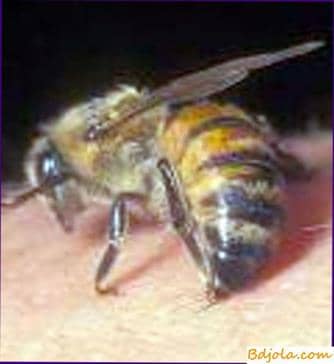Bee venom in medicine

According to the instructions, bee stings can be used mainly in the following diseases:
1. Rheumatic diseases (rheumatic polyarthritis, rheumatic diseases of muscles, rheumatic heart disease);
2. Nonspecific infectious polyarthritis;
3. Deforming spondylarthrosis;
4. Diseases of the peripheral nervous system (lumbosacral radiculitis, sciatic nerve inflammation, as well as femoral, facial and other nerves, intercostal neuralgia, polyneuritis, etc.);
5. Trophic ulcers and sluggishly granulating wounds;
6. Vascular surgical diseases (thrombophlebitis without purulent process, endarteriosis, atherosclerotic lesion of the vessels of the extremities);
7. Inflammatory infiltrates (without suppuration);
8. Bronchial asthma;
9. Migraine;
10. Hypertonic disease of stages I and II;
11. Irits and pridotsiklity. In addition, some authors include in the number of indications thyrotoxicosis I and II stages, Meniere’s symptom complex and other diseases.
Contraindications for the use of bee stings:
1. Idiosyncrasy to bee venom;
2. Tuberculosis;
3. Infectious diseases:
4. Mental illness;
5. Diseases of the liver and pancreas in the stage of exacerbation;
6. Kidney disease, especially those associated with hematuria;
7. Diseases of the adrenal cortex and, in particular, Addison’s disease;
8. Sepsis and acute diseases;
9. Decompensation of the cardiovascular system;
10. Organic diseases of the central nervous system;
11. General exhaustion of the body;
12. Diseases of blood and blood-forming system with a tendency to bleeding.
Bee venom in medicine
